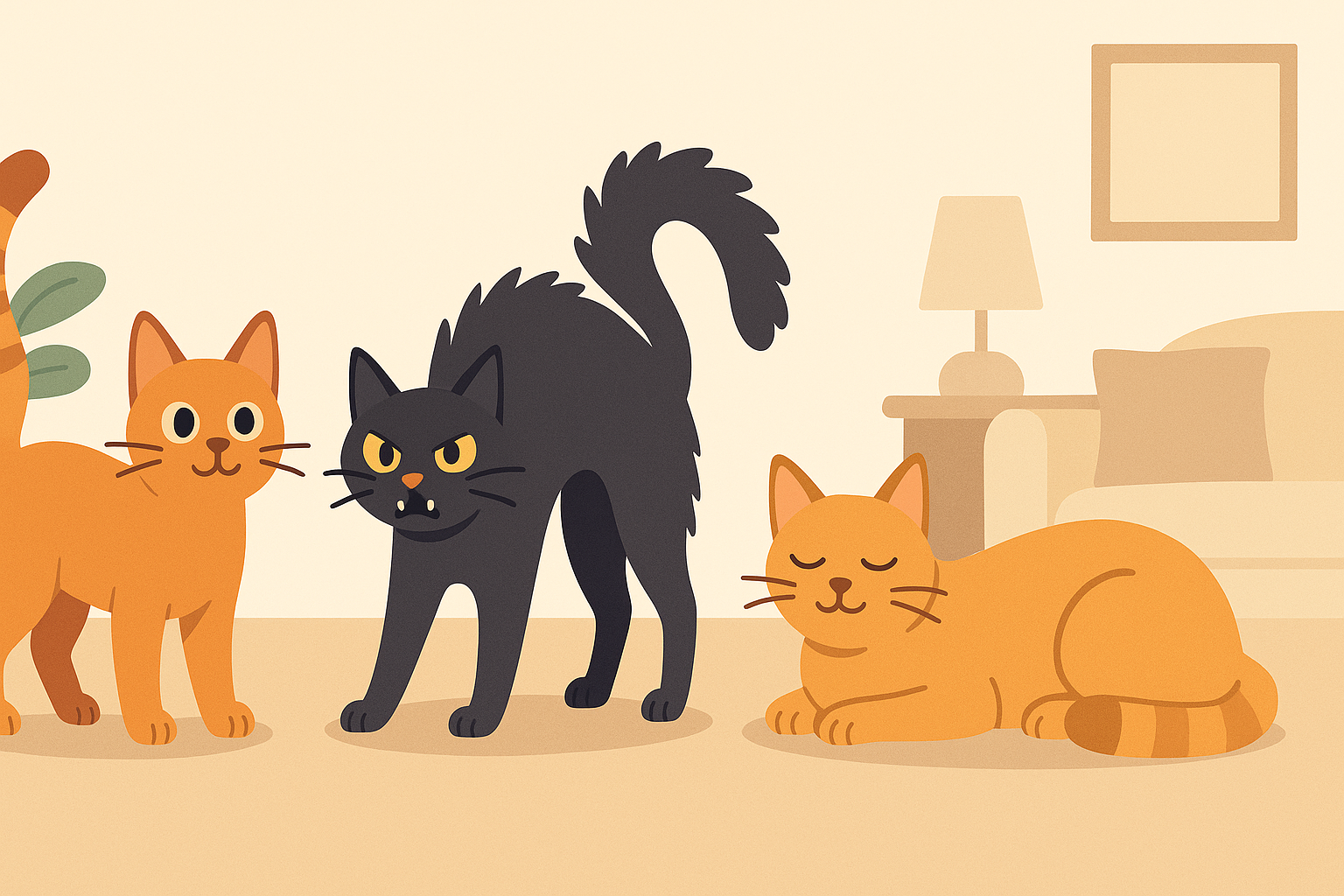Why Cat Tails Are Expressive
A cat’s tail is like a mood indicator, revealing their emotions through subtle or dramatic movements. Unlike dogs, who mainly wag to show happiness, cats use their tails for a wide range of signals. This makes tail movements a key part of cat body language. At Friends With Tail, we’re passionate about helping you understand feline communication to build a stronger bond with your cat.
Tails are expressive because they’re an extension of a cat’s spine, controlled by muscles and nerves that allow precise movements. Cats use their tails for balance, communication, and emotional expression. Whether your cat’s tail is high, twitching, or tucked, it’s telling you something about their state of mind. Learning to read these signals helps you respond to their needs, from playtime to giving them space.
Common Tail Positions and Meanings
Different tail positions convey specific messages. Here’s a guide to the most common ones:
- High and Straight: A tail held high, like a flagpole, signals confidence and happiness. Your cat feels secure and may greet you or explore.
- Curved Like a Question Mark: A tail with a gentle curve at the top shows curiosity or playfulness. It’s an invitation to interact.
- Twitching or Flicking: Quick, small movements often mean excitement or irritation. A twitching tail during play is normal, but during rest, it may signal annoyance.
- Swishing or Lashing: Large, side-to-side movements indicate agitation or aggression. Give your cat space to avoid a swat.
- Tucked Under: A tail tucked beneath the body shows fear or submission. Your cat may feel threatened or anxious.
- Puffed Up: A bushy tail, like a bottlebrush, signals fear or defensiveness. Your cat is trying to look bigger to ward off threats.
Each position offers insight into your cat’s mood. Pair tail signals with other cues, like ear position or vocalizations, for a fuller picture.
Reading Tail Signals in Context
Context is crucial for interpreting tail movements. The same tail signal can mean different things depending on the situation:
- During Play: A twitching tail often shows excitement or focus, like when your cat stalks a toy. It’s a sign they’re engaged.
- With Other Pets: A high tail during a meeting with another cat signals friendliness, while a lashing tail suggests tension.
- While Relaxed: A slow, gentle swish while lounging usually means contentment, unlike a fast swish that indicates irritation.
- During Stress: A tucked or puffed tail during loud noises or vet visits shows fear. Offer comfort or a quiet space.
Watch your cat’s environment and body language to understand their tail’s message. For example, a twitching tail with flattened ears is irritation, while one with bright eyes is playfulness. Including a visual chart of tail positions can help readers grasp these differences.
Responding to Your Cat’s Mood
Once you decode your cat’s tail signals, you can respond in ways that build trust. Here’s how:
- Engage Playful Signals: A question-mark tail invites interaction. Grab a feather toy or laser pointer for fun.
- Give Space for Agitation: If the tail is lashing, step back to avoid stress. Let your cat calm down before approaching.
- Comfort Fearful Cats: A tucked tail means your cat needs reassurance. Offer a quiet spot or gentle petting if they’re receptive.
- Reinforce Happiness: A high tail is a great time for affection or treats, rewarding their confidence.
- Monitor Changes: Sudden tail behavior shifts, like constant tucking, may signal stress or health issues. Consult a vet if concerned.
Thoughtful responses show your cat you understand them, fostering a deeper connection. For more feline communication tips, check out Friends With Tail.
Building Trust Through Observation
Observing your cat’s tail movements over time strengthens your bond. Here’s how to make observation a habit:
- Track Patterns: Note when your cat uses specific tail signals, like twitching before pouncing, to predict their behavior.
- Create a Calm Environment: Reduce stressors like loud noises to encourage confident tail positions, like a high tail.
- Spend Quality Time: Regular play or cuddling helps you notice subtle tail changes, deepening your understanding.
- Respect Their Space: Honoring tail signals, like backing off during a lash, shows respect and builds trust.
- Stay Patient: Every cat is unique. Some are more expressive than others, so take time to learn your cat’s style.
Consistent observation turns you into a cat behavior expert, making your relationship more rewarding.
Wrapping Up
Your cat’s tail is a powerful tool for understanding their emotions and needs. By decoding common positions, reading context, and responding thoughtfully, you can connect with your cat on a deeper level. Observation and patience are key to building trust and a happy home. Tail movements reveal a world of feline communication—embrace it to strengthen your bond. Have a tail signal story or question? Share it in the comments, or explore more resources to decode your cat’s behavior!

